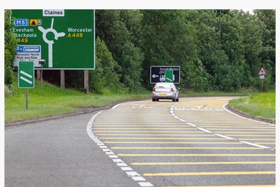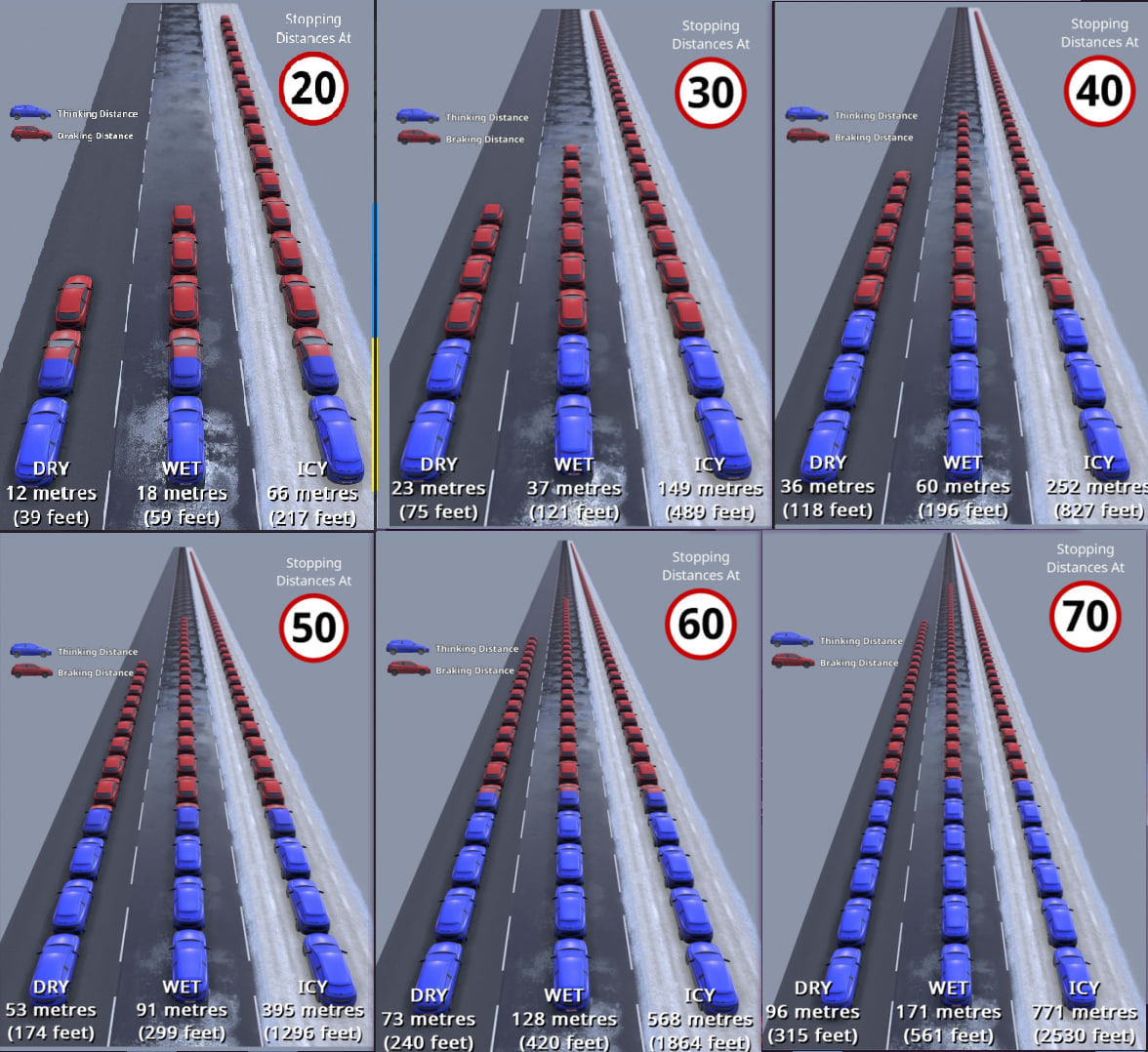Road Safety and Driving Guidelines
Common Hazards on the Road
| Category | Description |
|---|---|
| Vehicle Emerging from Junctions | Always be cautious of vehicles suddenly appearing from side streets. |
| Open Doors | Beware of parked cars with doors opening unexpectedly. |
| Vehicles Exiting Driveways | Be vigilant for cars reversing out of driveways. |
| Pedestrians | Stay alert for people crossing the street, especially in busy areas. |
| School Crossings | Exercise extra caution near schools, especially during opening and closing times. |
| Children Running from Between… | Be cautious of children who may dart out suddenly. |
| Animals on the Road | Watch for wildlife or pets crossing the road. |
| Cyclists and Motorcyclists | Share the road safely with cyclists and motorcyclists. |
| Organized Walks | Look out for groups of people walking with lights (red at the back, white at the front) and wearing fluorescent clothing. |
Give Way Rule: If there is a parked car on your side of the road, yield to oncoming vehicles.
Collisions
- Police Involvement: Police can request your driving license if you’re involved in a collision. If there’s damage or injury, you must stop.
- Information Sharing: You can share the following information in case of a collision: Your name, address, and vehicle registration number.
- Mandatory Actions: Stop at the scene of the incident. If you hit a wall or building, inform the police within 24 hours.
Hazard Warning Lights
- Must be used to warn other users on a motorway.
- Must be used in case of a breakdown and when causing an obstruction.
- Or on an unrestricted dual-carriageway.
- Use it for a moment if there is queuing traffic ahead; it will help alert the traffic behind you.
- When you need to slow down quickly because of a hazard ahead.
Alcohol
- Effects of Alcohol: Gives a false sense of confidence, reduces coordination, and slows down reaction time.
MUST NOT drive with
| In England and Wales | In Scotland | |
|---|---|---|
| Breath Alcohol | Higher than 35 micrograms/100 milliliters of breath | Higher than 22 micrograms/100 milliliters of breath |
| Blood Alcohol | More than 80 milligrams/100 milliliters of blood | More than 50 milligrams/100 milliliters of blood |
Long Journeys
Before starting a long journey, make sure that your vehicle can cope with the demands of high-speed driving. You should check the following:
- Fuel
- Oil (it can lead to mechanical breakdown) - the car has a dipstick to check its level or look into your vehicle handbook.
- Water
- Tyres
- Plan your rest stops.
Shock Absorbers: If your car keeps bouncing after you sharply press down and release on the bodywork over the wheel or if your vehicle bounces as you drive around corners or bends, it means that your shock absorbers are worn.
Road Markings and Signs
What Do Those Yellow Lines Mean?
Yellow lines on the road are:

When May You Cross a Double Solid White Line in the Middle of the Road?
- To pass a road maintenance vehicle traveling at 10 mph or less.

When May You Park on the Left with Double White Lines Along the Centre of the Road?
- To pick up or set down passengers.

Minimum Distance to a Junction for Parking
- At least 10 meters (32 feet) unless there is an authorized parking space. This prevents obstruction for other road users.
Emergency Stop and Police Signals
How Will a Police Officer in a Patrol Vehicle Signal for You to Stop?
- Flash the headlights, indicate left, and point to the left.
Parking Guidelines
| Condition | Requirement |
|---|---|
| At Night | You must leave parking lights on if the road speed limit is 40 mph or higher. |
| In Foggy Conditions | Always use parking lights. |
Noise Restrictions
Between 11:30 pm and 7:00 am, you must not use your horn or rev your engine in built-up areas unless another road user poses a danger.
Motorways
Always check whether the central reservation has enough space for your vehicle before merging from a side road into a dual carriageway.
Contraflow System
You must always choose the appropriate lane in good time.
What Should You Do When Going Through a Contraflow System on a Motorway?
Keep a good distance from the vehicle ahead.
Neutral Gear
If you travel in neutral for a long time, it means you are using coasting.
Higher Gear
You can use a higher gear in snow to start the movement of your car.
Stopping Distances
Thinking Distance / Braking Distance 6/6
| Speed | Dry Conditions | Wet Conditions | Icy Conditions |
|---|---|---|---|
| mph (km/h ) | thinking/braking | ||
| 20 mph (32 km/h) | 6/6 | 6/12 | 6/60 |
| 30 mph (48 km/h) | 9/14 | 9/28 | 9/140 |
| 40 mph (64 km/h) | 12/24 | 12/48 | 12/240 |
| 50 mph (80 km/h) | 15/38 | 15/76 | 15/380 |
| 60 mph (96 km/h) | 18/55 | 18/110 | 18/550 |
| 70 mph (112 km/h) | 21/75 | 21/150 | 21/771 |
 |
Refer to the stopping distances table for precise measurements:

